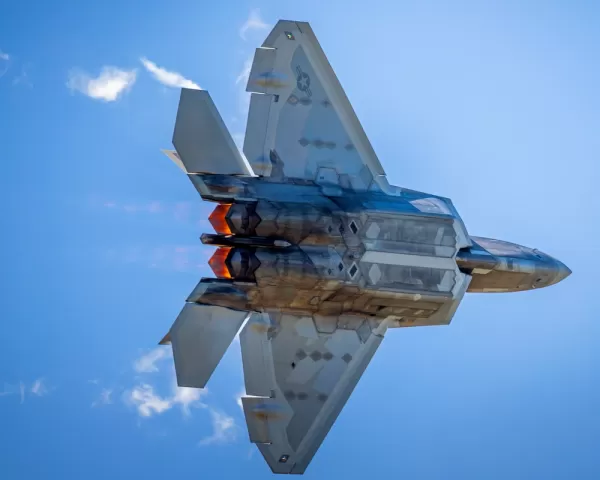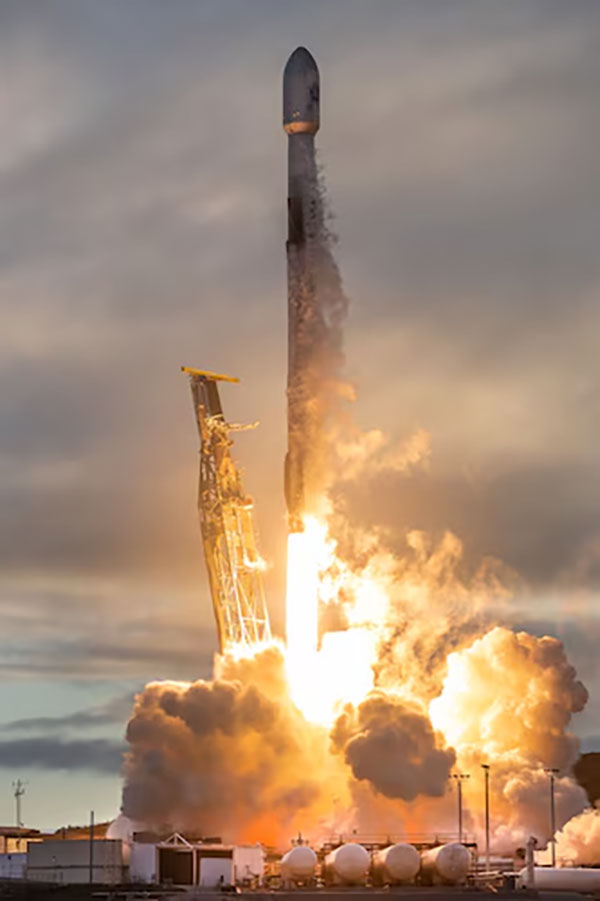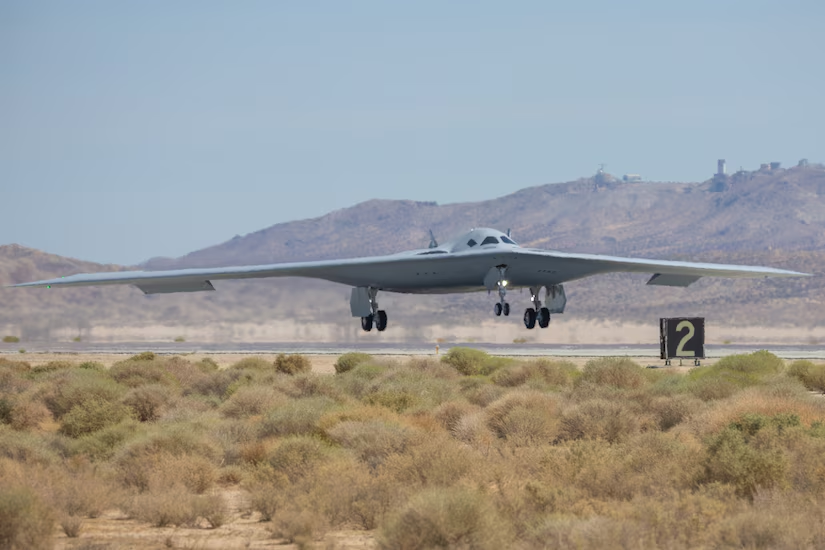Military Technology
- Details
- Hits: 300

VIRGINIA BEACH, VIRGINIA, UNITED STATE, (September 19, 2025): 1st Fighter Wing. An F-22 Raptor performs an aerial demonstration at Naval Air Station Oceana, Virginia. Rapid changes in angle of attack create visible vapor around the aircraft, providing a clear view of its aerodynamic performance. This demonstration highlights the F-22’s advanced maneuvering capabilities, showcasing its speed, agility, and thrust-vectoring performance. U.S. Air Force photo by Staff Sgt. Lauren Cobin.
- Details
- Hits: 435

WASHINGTON (AFNS), (September 11, 2025): The Space Development Agency has announced the successful launch of the first Proliferated Warfighter Space Architecture Tranche 1 (T1) Transport Layer space vehicles (SV) from Vandenberg Space Force Base, California.
A SpaceX Falcon 9 rocket delivered, Sept. 10, on orbit 21 T1 data transport SVs built by York Space Systems that will provide low-latency communication links to support the warfighter with a resilient network of integrated capabilities, including tracking of advanced missile threats, enabled by beyond-line-of-sight tactical data links from low-Earth orbit (LEO).
Read more: SPACE DEVELOPMENT AGENCY COMPLETES SUCCESSFUL LAUNCH OF FIRST TRANCHE 1 SATELLITE
- Details
- Hits: 435

Secretary of the Air Force Public Affairs, (September 11,2025): The Department of the Air Force announced the arrival of the second B-21 Raider flight test aircraft, Sept. 11, at Edwards Air Force Base, California, enhancing the Air Force's capacity to conduct comprehensive testing and sustainment training.
The addition of the second aircraft expands the service's testing capabilities beyond initial flight performance checks, enabling progression into critical mission systems and weapons integration testing phases. This advancement marks a step toward operational readiness of the nation's sixth-generation stealth bomber.
Read more: AIR FORCE ANNOUNCES ARRIVAL OF SECOND B-21 TEST AIRCRAFT
- Details
- Hits: 759

September 3, 2025: Soldiers assigned to the Army's 2nd Cavalry Regiment detected, tracked, engaged and defeated multiple drones at ranges between 500 and 800 meters using the Ballistic Low Altitude Drone Engagement system from a Stryker vehicle at the Bemowo Piskie Training Area in northeast Poland during a live-fire event for Project Flytrap 4.0 on Aug. 1.
Read more: BLADE CUTS DOWN DRONES DURING PROJECT FLYTRAP 4.0
- Details
- Hits: 455

PUERTO RICO, (September 5, 2025): U.S. Marine Corps UH-1Y Venom Helicopters and AH-1Z Cobras with Marine Medium Tiltrotor Squadron 263 (Reinforced), 22nd Marine Expeditionary Unit (Special Operations Capable), fly in formation over a U.S. Navy Landing Craft Air Cushion during a beach landing exercise in Arroyo, Puerto Rico. As part of their assigned responsibilities to ensure global reach and readiness, the services routinely provide U.S. Southern Command with resources, capabilities, and personnel to support its mission, War Department-directed operations, and the President’s priorities. (U.S. Marine Corps photo by Lance Cpl. Kyle Baskin)






